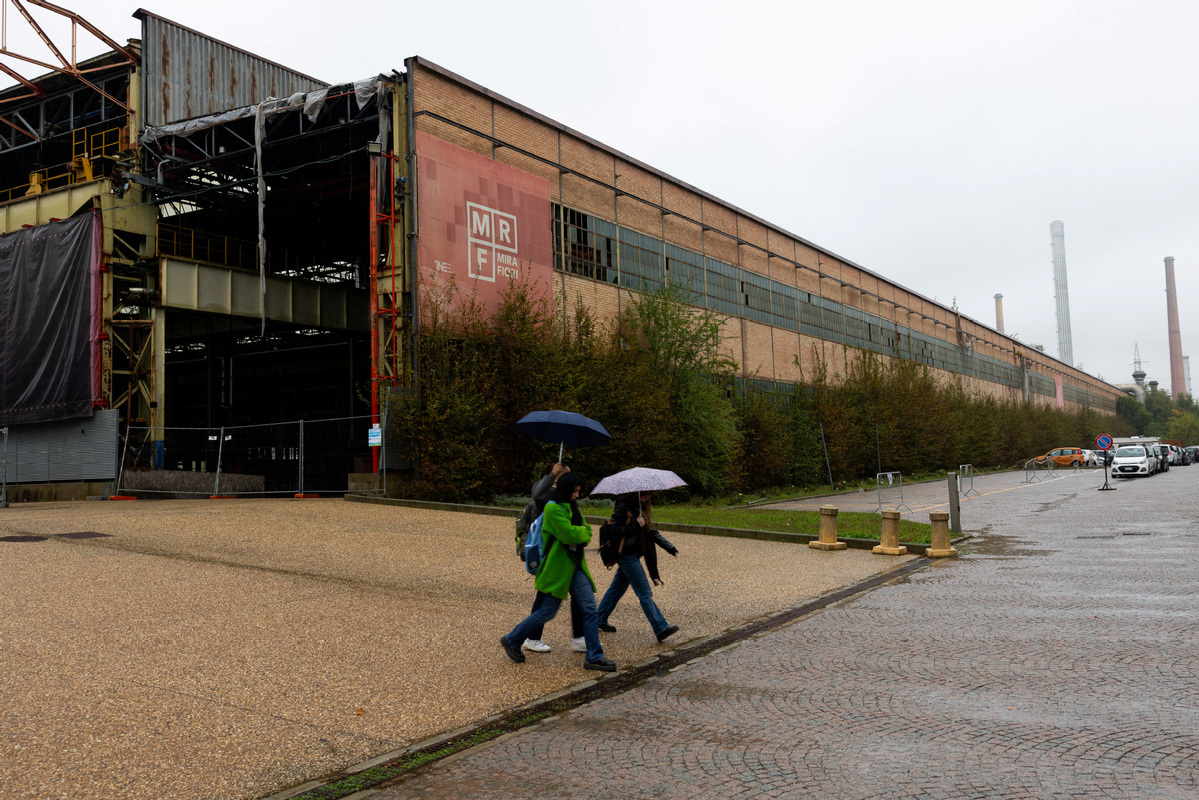As landmark Fiat stalls, Italy's Turin struggles to avoid decline

Located at the foot of the Alps in north-west Italy, Turin is where Fiat, now part of multinational Stellantis, was co-founded by the Agnelli family 125 years ago. Now it is grappling with the decline of its once-dominant industry, evident in the state of its historic Mirafiori plant.
The factory makes the Fiat 500 electric city car and two Maserati sports cars, but due to low demand, production has been suspended for large parts of the year and 2,800 workers are on furlough on reduced pay.
"Mirafiori has already been closed. It's just that it reopens sometimes," says Giacomo Zulianello, a plant worker and Italian Federation of Metalworkers trade union official who is among those laid off until the start of November.
To survive, Fiat allowed its Italian identity to become diluted as it took over and then merged with Chrysler in 2014, creating Fiat Chrysler Automobiles, and joined with Peugeot maker PSA to form Stellantis in 2021. Meanwhile, Turin has lost four of its car plants over the last four decades, starting with Lingotto in 1982 — famous for the rooftop test track that features in the classic 1960s British film The Italian Job — and ending in 2023 with Grugliasco.
Mirafiori — once the symbol of Fiat's might, employing around 60,000 people and churning out as many as 1 million cars a year including the original Fiat 500 in its 1960s heyday — has shriveled to a shadow of its former self.
"There is a taboo word here in Turin, which is 'decline' ... we can call it what we want ... but it is a fairly incontrovertible fact," says Luca Davico, an urban sociologist at Turin's Polytechnic.
Mirafiori is now the last car plant standing in Turin, its workforce mostly idle and nearing retirement. Their average age is 57-58, unions say, while younger generations are no longer attracted to the automotive sector.
Michela Sanfilippo, another factory worker, got a stark reminder of this when she went to get a tattoo.
"The guy who tattooed me was very young and when he asked me where I worked and I told him 'Stellantis, ex-Fiat', he answered 'what's that? What does it produce?' ... it was very embarrassing," she says.
Francesco Zirpoli, a management professor at Venice's Ca' Foscari university and scientific director of its Center for Automotive and Mobility Innovation, says Italian auto production has slumped due to Stellantis skimping on investments on new models, especially for its Italian factories.
"More than a mistake, it was a choice," he says.
The shift from Fiat to Stellantis means Turin is no longer the main hub for engineering and product development, Zirpoli adds. The latest Fiats, Alfas and Lancias are styled in Italy, but use mostly French-derived engines and platforms.
They are produced abroad, and Stellantis CEO Carlos Tavares has said making one of them — the Alfa Romeo Junior — in Italy rather than Poland would have added 10,000 euros ($10,900) to its retail price.
Mirafiori, known as the "city within a city", is a huge complex spread over more than 2 million square meters. But now, when Zulianello goes to work, he faces a 15-minute walk from factory gate to assembly line through abandoned spaces.
Furloughed workers are paid only around 1,100 euros a month after tax, compared to a regular salary of about 1,600 euros. Unions say many of them are struggling to get by.
"We have been through ugly periods," says Davide Manago, a FIM official and plant worker whose wife also works at Mirafiori. Both were furloughed several times but luckily never at the same time.
Still, the money was sometimes "not enough to pay the mortgage and going to the bank to ask for loans to put food on the table was not easy", Manago, 49, says, the memory bringing him to tears. "My fear is going back to that."
Stellantis insists that Mirafiori has a future. The factory makes gearboxes for electric and hybrid vehicles, hosts a recycling center for car parts and a battery technology lab, and will start producing a new hybrid version of the Fiat 500 in late 2025.
Turin could also benefit if the government attracts another automaker to Italy, ending Stellantis' status as the sole major national car producer. Talks are ongoing with China's Dongfeng Motor Group and Chery. However, Manago hopes his 18-year-old son and 15-year-old daughter will find better opportunities elsewhere: "I expect their future will not be in Turin, perhaps not even in Italy."
REUTERS

